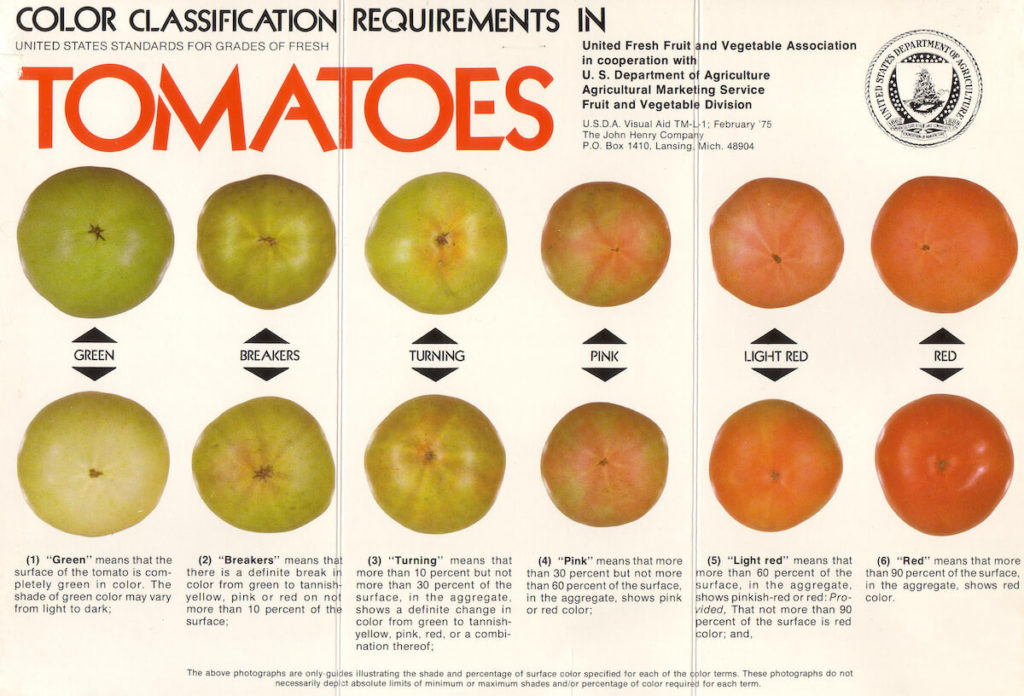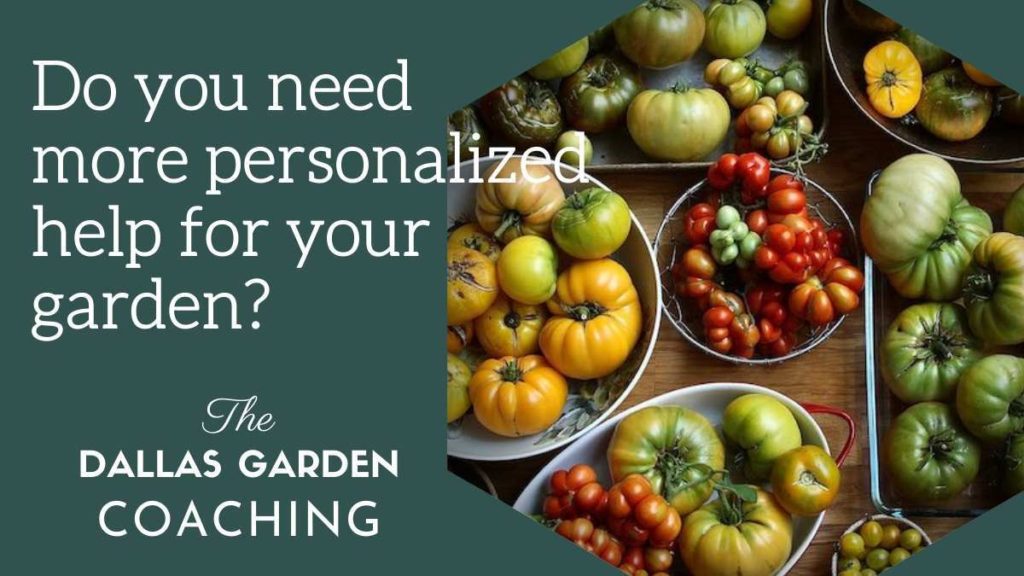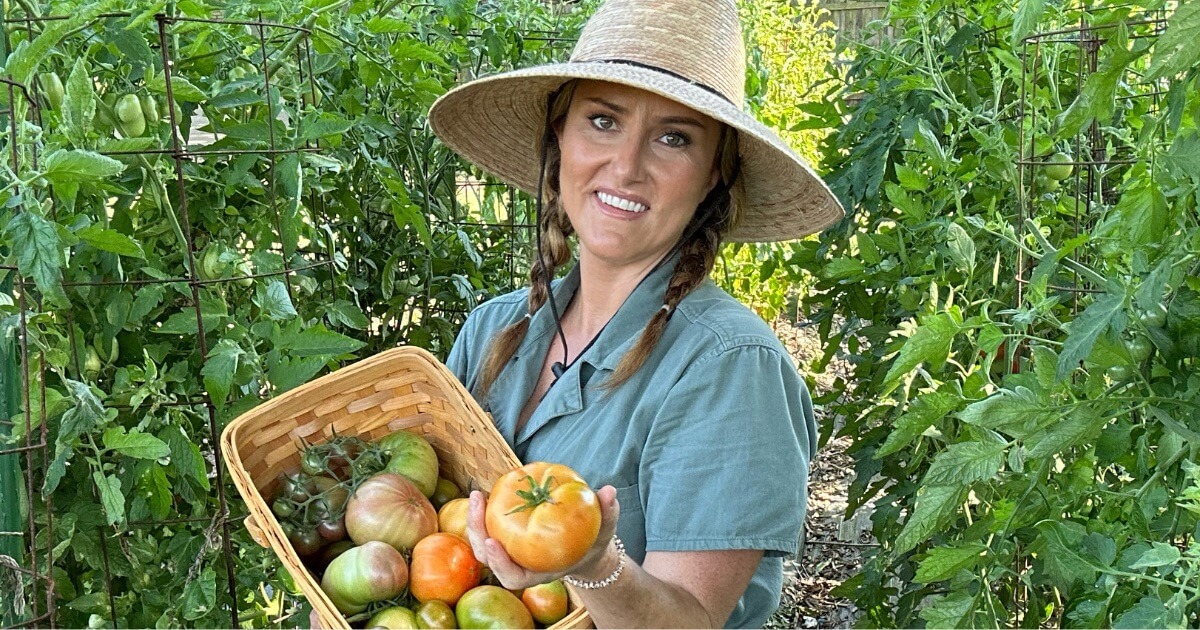
There are two things that let me know it’s summertime in Dallas: the smell of fresh cut grass and the taste of homegrown tomatoes. And every summer, gardeners debate the same question:
Are tomatoes ripened on the vine as good as tomatoes ripened on the countertop?
Having grown tomatoes for nearly two decades, I know firsthand that a tomato can be picked at the first sign of ripening and left to ripen indoors with very little perceptible difference in quality.
In my opinion, this is the easiest, most effective way to protect your crop from pest damage or theft.
But I wanted to know the science behind my understanding. Could I bust the myth that a tomato left to ripen fully on the vine tastes significantly better?
What exactly is a vine-ripe tomato?
When gardeners talk about a vine-ripened tomato, they are typically referring to a tomato that reaches ready-to-eat maturity while still attached to the vine. But tomato scientists tell a different story.
In 1998, the Los Angeles Times published an article written by Russ Parsons titled, “The Ripe Time”. The article notes that tomato scientists consider a tomato to be “vine-ripe” at the breakers stage and beyond.
The tomato “breakers” stage
According to the USDA, a tomato reaches “breakers” stage when “there is a definite break in color from green to tannish-yellow, pink or red on not more than 10 percent of the surface.”
Furthermore, scientists who study tomato flavor say that “all of the components necessary to make a great tomato are present” at breaker stage, according to Parson’s article.

So, is a tomato picked at breakers stage just as good?
Marita Cantwell, a post-harvest specialist at the University of California Postharvest Center, is quoted in the article:
A vine-ripe [tomato] can ripen into a tomato that is nearly indistinguishable from what it would have been if it had been left on the vine […] if it is kept between 55 and 65 degrees during ripening.
Cantwell expands upon this in a 2017 presentation, and widens the range of temperature up to 68 degrees. Other studies suggest that tomatoes allowed to ripen at 68 degrees are sweeter and have more “tomato like” flavor than those held at 54 degrees.
Let’s dig deeper into the science of tomato ripening
So what exactly happens as a tomato ripens?
According to the book The Tomato Crop: A Scientific Basis for Improvement published in 1986:
- During fruit ripening, alpha-carotene and beta-carotene reach peak concentrations at the breaker and light red stages.
- The red color of ripe fruit is due to the subsequent rapid accumulation of lycopene.
- Citric acid concentrations increase to a maximum at the mature-green stage and remains at this level during ripening.
What gives tomato flavor
- Tomato flavor involves the perception of the taster.
- High sugars and relatively high acids are required for the best tomato flavor.
So why all the confusion?
Much of the myth surrounding vine-ripened garden tomatoes can be attributed to good ole marketing tactics. The beautiful, bright red tomatoes at the grocery with a “vine-ripened”
But confusion also stems from a frequently cited 1978 study that compared flavor between tomatoes harvested early and tomatoes picked at table-ripe stage.
Mature green versus light pink
Researchers in the 1978 study found that early harvested fruit was rated “lower in fruity-floral aroma and sweetness, and rated higher in sourness and “off-flavor”. However, what often goes unmentioned is that the early-harvested tomatoes that produced this result were picked at the mature green stage.
The study goes on to state that sensory differences among fruits harvested at the light pink stage were small when compared to fruits harvested at table-ripe.
The authors wrote in their conclusion that tomatoes should be harvested as close to table-ripe maturity for the best quality, but subsequent studies conducted by the scientists at UC Davis have shown that the difference in Tritable Acids (flavor) between tomatoes harvested at breakers and table-ripe is less than .03%. Additional studies show that the difference in total sugar compounds between full ripe and medium ripe tomatoes is only 3.33% versus a difference of 28.8% between full ripe and mature green.
The takeaways
Here are the key takeaways:
- A tomato is “vine-ripe” when it starts to change color.
- Picking a tomato at this “breakers” stage does not hinder flavor development in a statistically significant way.
- Tomatoes picked at vine-ripe continue the ripening process off the vine.
- Try to store ripening tomatoes around 68 degrees.
Internet “facts”
In my research, I discovered three separate articles, one in The Winston-Salem Journal, another from a Kansas State Extension, and another at GardeningKnowHow.com, that used nearly the exact same wording to describe why a tomato is ready to pick at the breakers stage:
“When the tomato reaches the breaker stage of about half green and half pinkish-red, a layer of cells form across the stem of the tomato sealing it off from the main vine. When this happens, nothing can pass between the fruit and the stem.”
I don’t know who borrowed from who, but none of these articles cited references to support this claim, and I could find no scientific evidence to support that a layer of cells forms across the stem sealing it off from the main vine. (If someone can prove me wrong on this, contact me.)
For more information about tomato ripening
More information and the sources credited:
Parsons, R. (1997). The Ripe Time. Los Angeles Times.
*The authors of the 1978 study wrote in their “conclusion” that tomatoes should be harvested as close to table-ripe maturity for the best quality, but subsequent studies conducted by the scientists at UC Davis have shown that the difference in Tritable Acids (flavor) between tomatoes harvested at breakers and table-ripe is less than .03%. Additional studies show that the difference in total sugar compounds between medium ripe tomatoes and full ripe tomatoes is 3.33% versus a difference of 28.8% between mature green and full ripe.

- Can Eating Tomatoes Help Prevent Weight Gain? New Study Says Yes - May 25, 2025
- New to Gardening? Join Our Step-by-Step Beginner Gardening Class - April 24, 2025
- Why “Intensive” Gardening is Not Good - March 9, 2025



